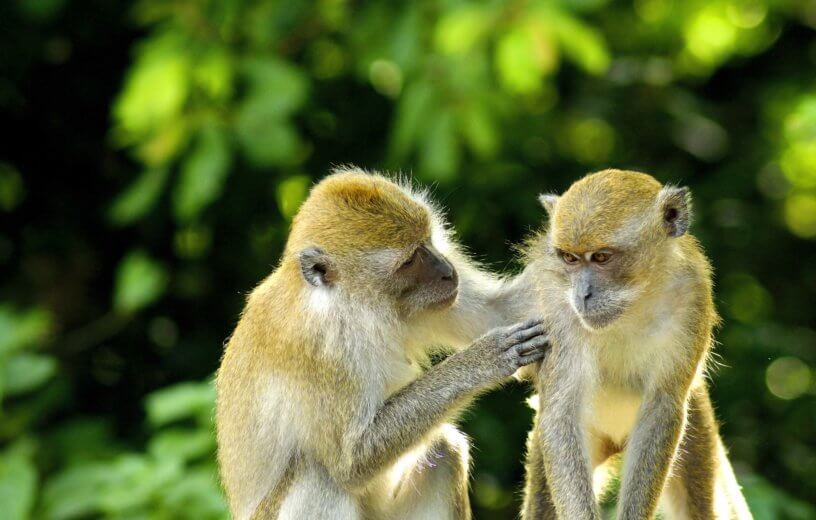NEW HAVEN, Conn. — It’s often said that “sharing is caring,” but there may be a bit more behind one’s decision to be generous to others than a propensity for kindness and empathy. A new study of monkeys may reveal just how much brain chemistry plays a role in whether or not we choose to help out our fellow woman and man.
Monkeys are highly social animals that live in groups called troops, but they’re not always very cooperative with other members. In fact, they’re known to act quite selfishly to assert their dominance or when resources are scarce. Interestingly, researchers at Yale University have recently identified specific patterns of brain activity that determine if a monkey is in a sharing mood or not.
Studies in humans have identified many candidate brain regions that drive decisions to share. For this particular trial, the researchers selected two brain regions to examine more closely: the amygdala and the medial prefrontal cortex.
The amygdala is typically called the emotional center of the brain. It’s responsible for fear and aggression, and it helps store emotional memories. Meanwhile, the medial prefrontal cortex is sometimes called the moral center of the brain. It’s responsible for a large variety of higher cognitive functions like analytical thinking and executive decision-making.
Researchers presented pairs of rhesus macaques with one of two scenarios where they had to decide if they would share juice with the other. This was done while the authors recorded activity in the amygdala and medial prefrontal cortex activity in the macaques’ brains. In the first scenario, the monkeys could choose to give juice to their fellow monkey or have the juice thrown in the trash. In the second scenario, they had to choose if they wanted to drink juice by themselves or share the juice.
Of course, monkeys hate to see good juice go to waste, so in the first scenario they would typically give the juice away. But they weren’t as nice when they had the option to drink the juice by themselves.
It turns out that the decision to share and the decision not to share can be identified by the rhythms of brain activity between the amygdala and the prefrontal cortex.
When the brain activity between the two regions were in sync, the monkeys had decided to share the juice. The two regions were not tuned together when the monkey chose to have the juice thrown out or when it chose to drink alone.
Additionally, the activity of the brain regions occurred at different frequencies depending on which decision the monkey made.
“We found a unique signature of neural synchrony that reflects whether a pro-social or an anti-social decision was made,” says Steve Chang, the senior author of the paper and an assistant professor of psychology and neuroscience at Yale University, in a release.
The findings of this study suggest that the coordination of the activity between the amygdala and the prefrontal cortex regulates social-decision preferences.
“We all know there are individual differences in levels of generosity,” adds Chang. “Maybe Scrooge did not have high levels of synchrony after all.”
The study is published in Nature Neuroscience.
